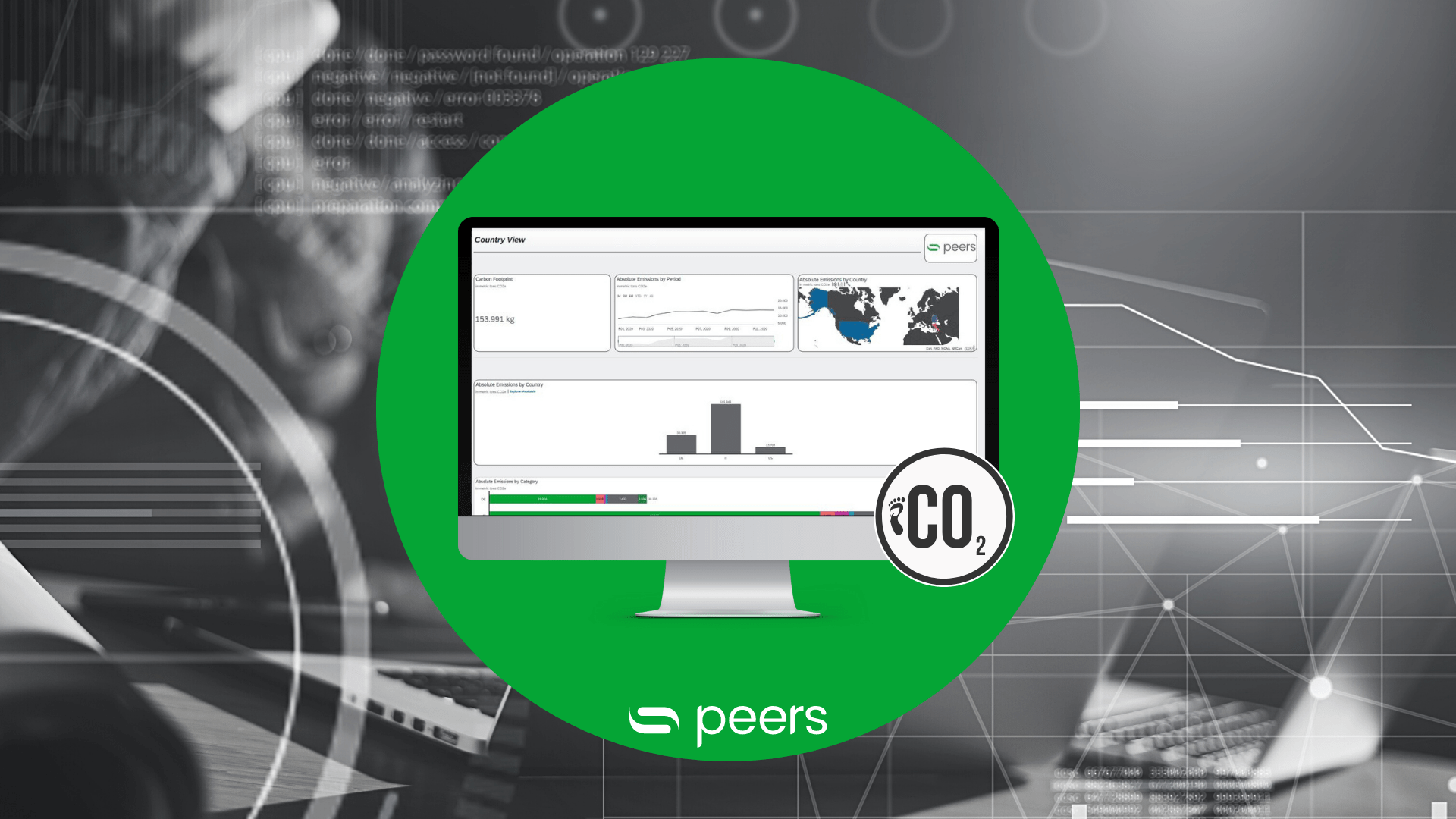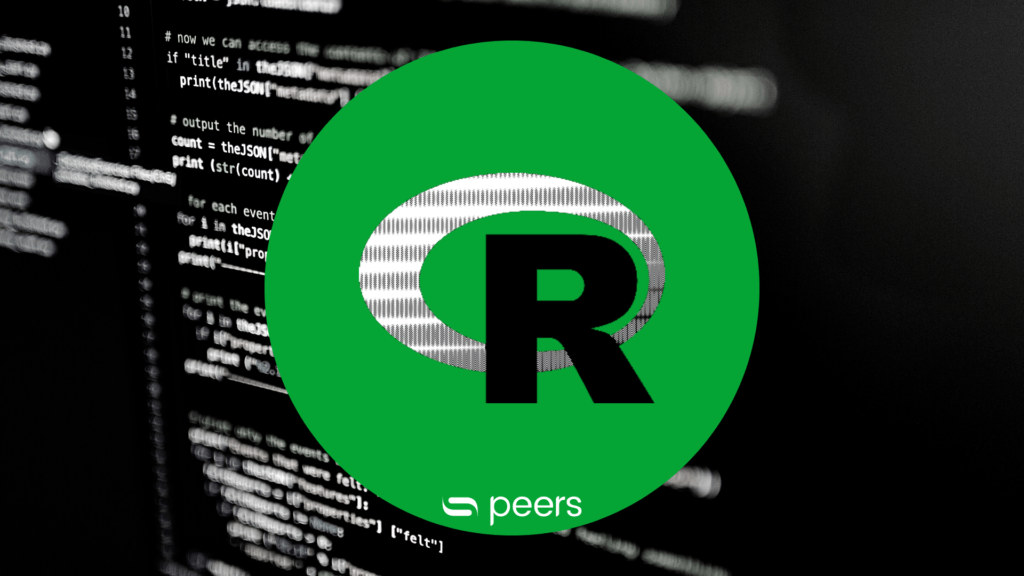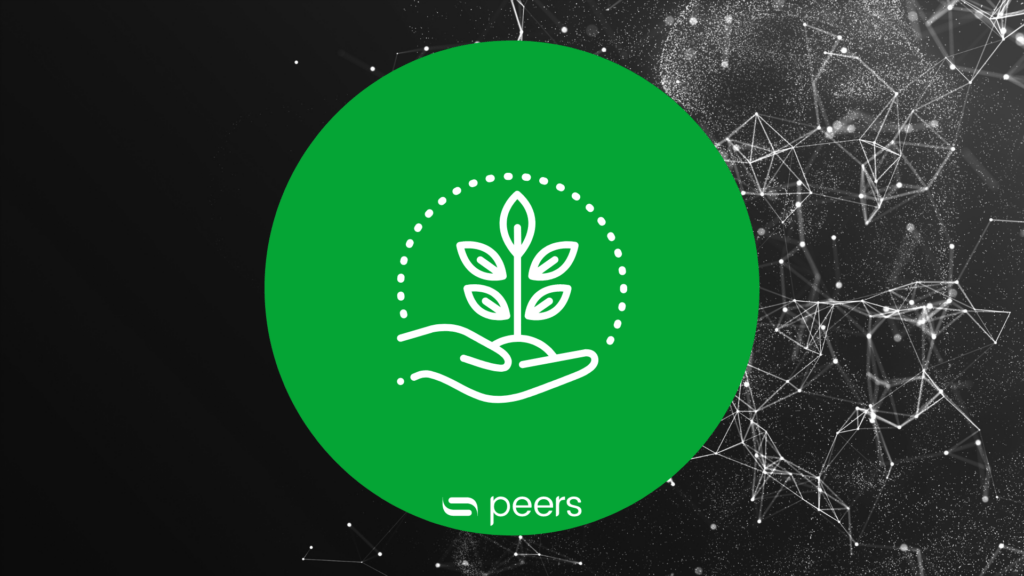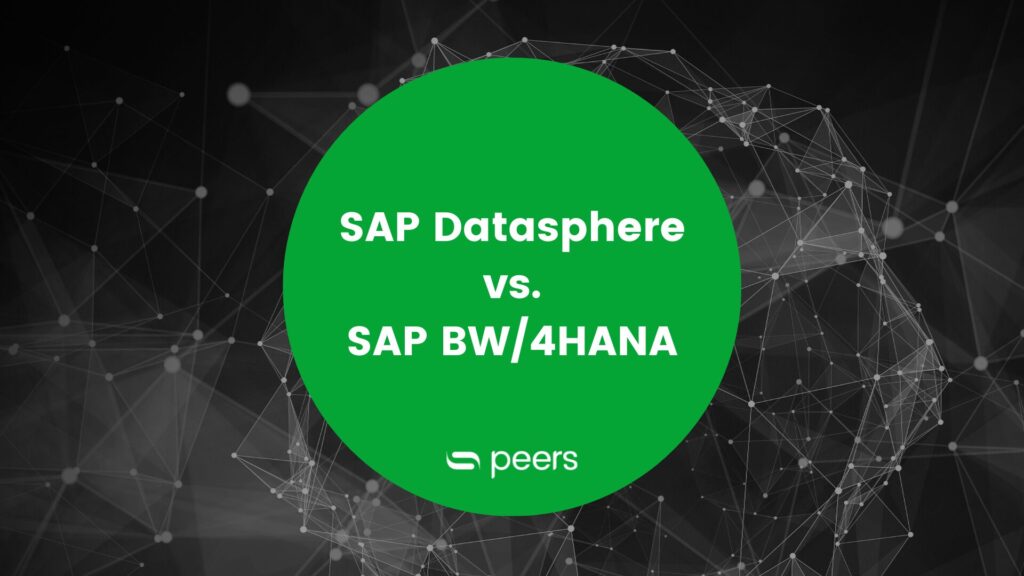How do I calculate the carbon footprint?
- Sustainability Solutions
- carbon footprint, howmucharebananas, Sustainability
- 7 min reading time

Dea Marovic
This article answers the question of how to calculate a carbon footprint - i.e. an ecological footprint. Important terminology, such as the primary and secondary databases, the life cycle analysis approach, direct emissions, activity data and emission factors, as well as formulas for calculating the product carbon footprint are presented.
As can be seen from the previous wiki on "Corporate and Product Carbon Footprint", there are still no standards for calculating the Product Carbon Footprint. Since no specific calculation method is therefore prescribed, this knowledge article presents a simplified approach for the calculation.
Table of contents
1. requirements for the calculation of the carbon footprint
The basis for a successful calculation is data collection. The support of all relevant departments is therefore necessary for internal data collection. The larger the company to be reported, the more departments are involved in the data collection and the more complex the calculation of the carbon footprint.
Internal transparency is also important for successful data collection, as strict confidentiality guidelines can make the collection of primary data much more difficult. For the balancing of external processes, data from suppliers and disposers is needed. Again, the more suppliers a company has, the more complex the data collection and calculation becomes.
However, the most important basic prerequisite is access to LCA databases. They are fundamental for the calculation of the Product Carbon Footprint, as they provide the necessary emission information on the respective work and production processes and the respective raw materials, energy sources, primary and waste products used. They are standardised reference values that facilitate the calculation or close gaps in the value chain that cannot be measured(Hottenroth et al., 2013, p. 16).
The most important secondary databases include(Hottenroth et al., 2013, p. 16):
- ProBas (Process-oriented basic data for environmental management instruments),
- GEMIS (Global Emission Model of Integrated Systems), ELCD (European Reference Life Cycle Database) and
- ecoinvent.
2. life cycle analysis (LCA)
To enable a successful calculation of the PCF, it is important to understand the life cycle analysis (LCA) of a product. Furthermore, it should be clearly defined which step in the value chain is assigned to which phase(Hottenroth et al., 2013, p. 28).
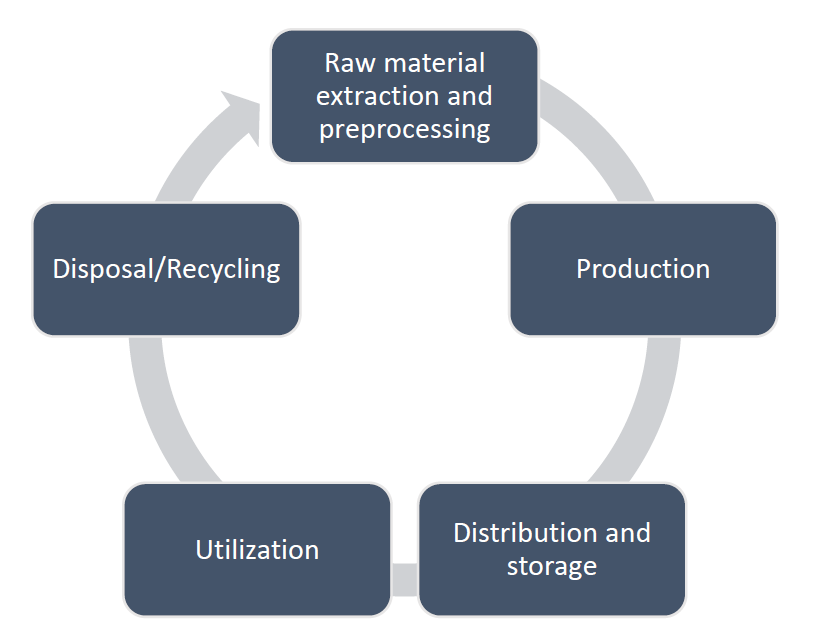
There are five different life cycle phases:
- The first phase of the product cycle begins with the extraction of raw materials (raw material extraction and preprocessing) from the environment and ends as soon as the raw materials or intermediate products reach the production site of the accounting company. In this phase, processes such as mining activities, agriculture and harvesting (including fertilisers and pesticides used), raw material refinement and transport during preprocessing to the production site can be included(Hottenroth et al., 2013, p. 28).
- The second phase, themanufacturing phase (production), begins as soon as the raw materials or intermediate products arrive at the production plant. It ends as soon as the finished product leaves the production facility. In this phase, all production processes are considered, from the mechanical and thermal machining processes, assembly and packaging to in-house transport (Hottenroth et al., 2013, p. 29).
- Thethird phase is called the distribution and storage phase and begins when the finished product leaves the factory. This phase ends when this final product reaches the hands of the consumer. The processes from loading, transport between production sites, retail or point of sale to heating, cooling or ventilation processes in the warehouse are taken into account(Hottenroth et al., 2013, p. 29).
- This is followed by the fourth phase - utilization . It begins as soon as the consumer starts using the product and ends when the product is disposed of. Consumers use products in different ways and for different periods of time. The type and duration of utilization depend not only on individual consumer behavior, but also on the function and service life of the product under consideration. This phase is responsible for a large part of a product's greenhouse gas emissions, but is difficult to measure. Therefore, assumptions have to be made here(Hottenroth et al., 2013, p. 29).
- The fifth, final phase is the disposal of the product (disposal / recycling). This phase begins with the handover or disposal of the product by the consumer and ends with its return to the ecosphere. In this last phase of the product life cycle, not only the disposal of the product or product residues are considered, but also the disposal of the product packaging(Hottenroth et al., 2013, p. 30).
Each of these phases generates greenhouse gas emissions that should be taken into account. How these phases and their emissions can be calculated is presented below.
3. calculation approach for the product carbon footprint
Now that the preparations for the collection of the Product Carbon Footprint (PCF) have been described, the description of the actual calculation of the PCF follows. As explained above, a simple and condensed calculation is presented below. Allocation processes, the removal of greenhouse gases along the value chain, the distinction between biogenic and non-biogenic sources as well as recycling processes are not considered in the following presentation in order to reduce complexity.
3.1 Three basic definitions: Direct emissions, activity data, and emission factors.
There are 3 different types of data to distinguish(Hottenroth et al., 2013, p. 39):
- Direct emissions: These are emitted greenhouse gases that can be determined by direct measurement or by stoichiometric calculation. The collection of this data is usually particularly complex, as it requires expensive equipment for continuous measurement. One example is measurement using a sensor on a chimney or incinerator that measures the exact emissions.
- Activity data: They describe both input and output processes and can be measured, calculated or modelled. In particular, material or energy consumption as well as waste quantities are taken into account. Examples of activity data are the energy consumption of production processes, the fuel consumption of vehicles and the consumption of raw materials.
- Emission factors: Emission factors can be used to convert activity data into greenhouse gas emissions. The activity data is then multiplied by the emission factors to obtain emission data.
3.2 Formula for calculating the product carbon footprint
This results in the following formula (Hottenroth et al., 2013, p. 40):

This formula applies as long as only CO₂ emissions are taken into account in the factors. If the emission factors of individual greenhouse gases are given, the above formula must be extended to include multiplication by the global warming potential (GWP) (blue). If direct emission data have been collected, activity data and emission factors are not required. In this case, the direct emissions are only multiplied by the GWP value (Hottenroth et al., 2013, p. 41).

Here, too, a distinction is made between primary and secondary data. Primary data is usually collected for the processes taking place in the company. This includes both direct emissions data and activity data. For upstream and downstream processes ,secondary data from life cycle analysis (LCA) databases are usually used. A life cycle analysis (LCA) is a systematic analysis of the environmental impacts and energy balance of products throughout their life cycle ("from cradle to grave") (Ifu (2021)).
To obtain more accurate results, it makes sense to also firmly include upstream and downstream processes in the calculation of the PCF and to work closely with suppliers, etc. In this way, emissions can be calculated for all process steps in the product life cycle or derived from databases. These emissions are then aggregated along the value chain to calculate footprints of the finished product (Hottenroth et al., 2013, p. 41).
The example of a carpentry workshop is a good illustration of this:
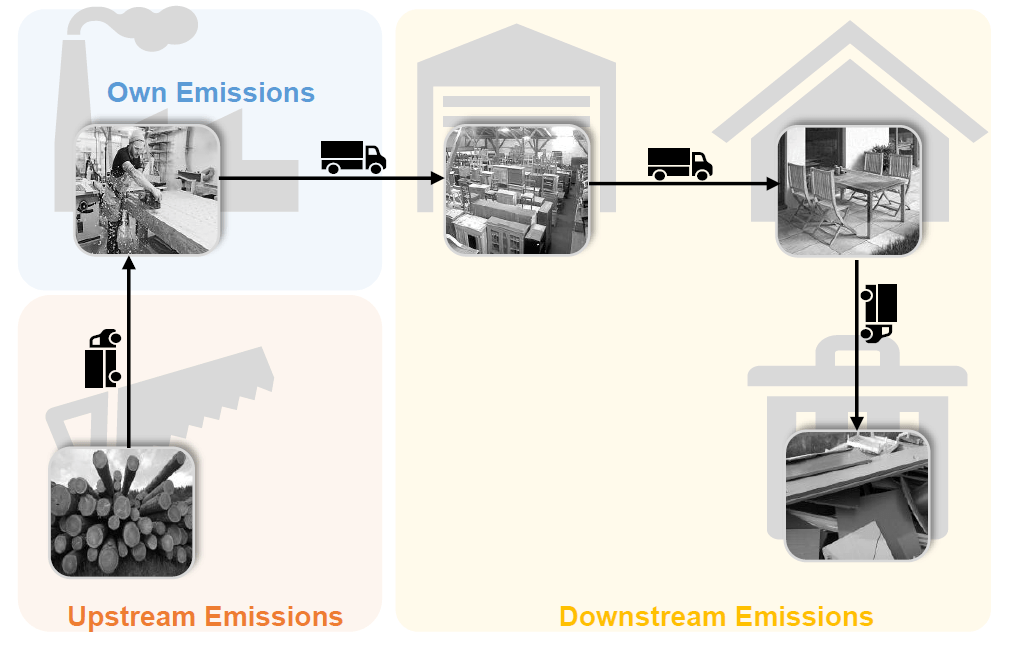
In the case of upstream emissions, all emissions are calculated that are generated during the extraction of raw materials and the production of intermediate products. In this example, the emissions from vehicles and tools needed to cut down the trees are calculated. Furthermore, the emissions from the energy used for the process and transport to the joinery are also calculated here.
In this example, the timber load is to be transported from Nuremberg to Constance by a 35 t truck. With the weight of the load and the transport distance, the GHG emissions can be calculated using the distance-based approach with standard energy consumption values per tonne-kilometre:
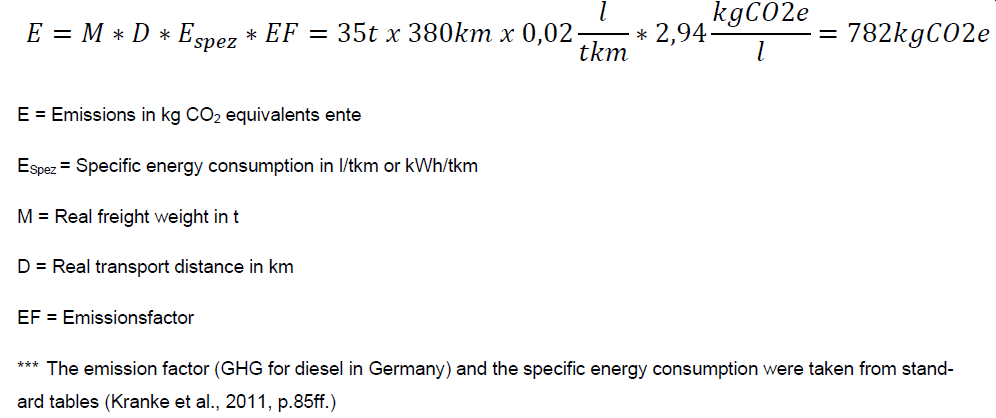
In the example, 782 kg CO2e are emitted for a transport distance of 380 kilometres.
In the area of own emissions, all emissions generated during production are recorded. Here, too, the energy used is calculated in CO₂ equivalents. However, the transport routes that occur within a plant are also taken into account. If the direct emissions were determined using sensors, for example, they are calculated as in formula II(Schmied & Knörr, 2011, p. 20).
In the last section, the downstream emissions, all emissions are calculated that occur during storage (heating, electricity, transport to the warehouse, transport to the furniture store), the use phase (emission data are mainly based on assumptions) and disposal (emissions during incineration, transport, shredding, etc.).
In the final step, all emissions data are then aggregated to calculate the carbon footprint of the furniture produced(Schmied & Knörr, 2011, p. 21).
4. conclusion
In principle, the calculation of a PCF can be done manually or using common spreadsheet programs such as Microsoft Excel. However, PCF calculations can also be very complex if a large amount of data has to be compiled and calculated and additional emission factors are required. Therefore, specialized software tools for the calculation are becoming increasingly important. One of these tools is the SAP Analytics Cloud (SAC). Read more about the different software tools here.
5. bibliography
Hottenroth, H., Joa, B., Schmidt, M., & Institute for Industrial Ecology (2013). Carbon Footprint for Products: Handbook for theoperational practice of small and medium-sized enterprises. https://www.hs- forzheim.de/fileadmin/user_upload/uploads_re-dakteur/Research/INEC/Documents/Hottenroth_et_al_Carbon_Foot-prints_fuer_Produkte_web.pdf.
Ifu. (2021). Life Cycle Assessment (LCA) - Definition | Institute for Environmental Informatics. https://www. ifu.com/de/oekobilanz/
Schmied, M., & Knörr, W. (2011). Calculation of greenhouse gas emissions in freight forwarding and logistics. http://www.co2-sachverstaendiger.de/pdf/DSLV-Leitfa-den%20Berechnung%20von%20THG-Emissionen%20in%20Spedi-tion%20und%20Logistik.pdf
Would you like to delve deeper into this topic? Then we look forward to a personal exchange on the topic of sustainability reporting. Simply get in touch with us!
More information on the topic of sustainability can also be found in other Wiki articles.

Published by:

Dea Marovic
Lead Sustainability & Professional Analytics Consultant

Dea Marovic
How did you like the article?
How helpful was this post?
Click on a star to rate!
Average rating 4.3 / 5.
Number of ratings: 7
No votes so far! Be the first person to rate this post!
